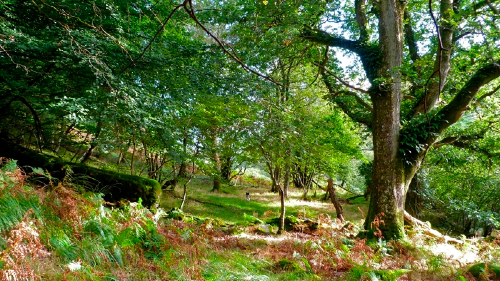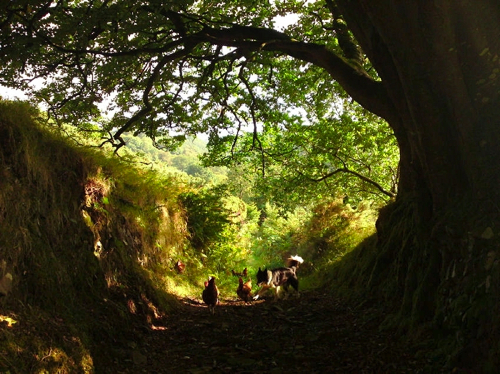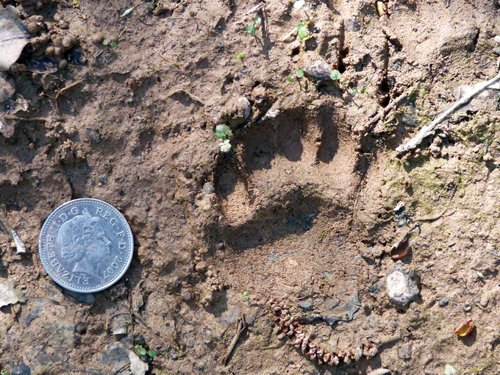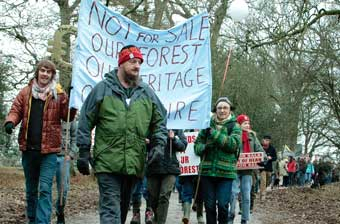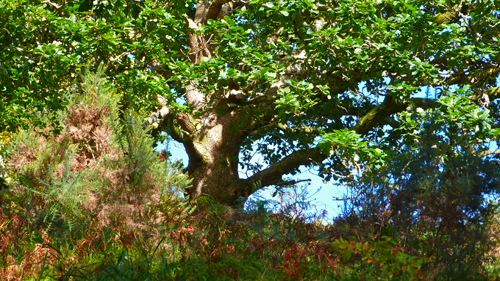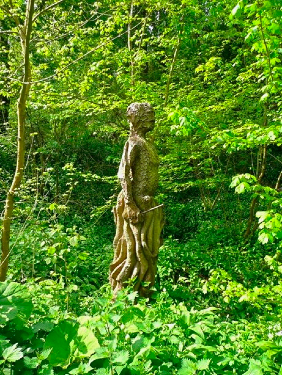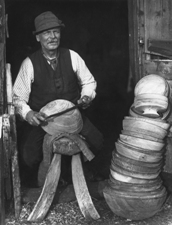In the uprising of all ‘stakeholders’, (policy speak for those who have an interest in), for the English landscape and the public forest estate, the subsequent developments have been largely overlooked at peril by those who took the time to petition and further action against the decision to sell off the largest portion remaining of what many consider to be simply theirs.
The whole affair has highlighted the schisms between interest groups and policy across the whole spectrum of land management, but most importantly it has highlighted that those to whom the landscape belongs are far too removed from the management and policy making for their landscape. And the historically reassuring presence of large landowning NGOs were found unable or unwilling to represent them.
This disconnection between people and their landscape is a very modern phenomenon and whilst much academic text describes a disconnection dating back to the Enclosure acts and further, the 20th century saw rapid and massive changes to the English country landscape as a result of a dramatic change to both social and economic demography. ‘The mass trespass of Kinder Scout’ remains one of the most significant chapters of land management history and together with the activities of industrial philanthropists and the realisation of the importance of green space, all subsequent policy would surely dare not separate the public to gain benefit from their landscape.
The rise of land owning charities who supplemented available landscape and green space provided by government or through acts of parliament allowed for people to enjoy further interaction with both the management and policy decisions. But with increasing threats to the countryside together with pressures from a rapidly increasing population who had a desire to engage with the landscape also, the need to balance finances to cope led to a marriage of three factors which regrettably diminished the importance of both their members and the general public.
- The use of volunteers was encouraged so much so that the over reliance of volunteers is a huge problem in UK land management. It has disenfranchised practitioners, led to the loss of traditional skills and knowledge and fragmented rural communities.
- The introduction and increasing amounts of grant aid available from Europe and elsewhere to encourage sustainable land management and all it entails and in particular biodiversity, another financial reliance was born.
- The birth of PR as an industry and the need for corporate imagery was yet another reliance to ensure continued through flow of membership money and donations.
At the same time the governmental agencies were having to either morph, or new agencies were born with policies centralised around sustainable land & forest management. The range of facilities provided by the public estate to enjoy the landscape was great and heavily used. The ‘back up’ supplementary facilities provided by the NGOs were able to integrate and provide expertise on the single issues that formed part of the manifestos.
All the while the money was creating power and arrogance and corporate imagery was labelling the countryside as a network of nationally identified ‘brands’, which were even added to the OS maps. The people now knew where to go and for what reasons – but was it any longer their landscape?
How can a NGO, Governmental Agency or any other group with a hint of corporate imagery expect to assume full audience with someone who is in tune with their landscape? The apple taken from a tree cannot be packaged and branded in the time it takes to reach your mouth if the apple tree it is taken from stands in front of you.
The very word landscape started to change into several different meanings and it became a heavily abused word, leading to great confusion and a flurry of new academic research. To now ask someone about their landscape, it would require considerable further explanation to ensure that they understand that the landscape is a part of them and they are a part of the landscape.
In 2006 the UK ratified the European Landscape Convention.
The text of the convention defines Landscape as ‘an area, as perceived by people, whose character is the result of the action and interaction of natural and/or human factors.’
As the ‘Brundtland’ definition of sustainable development is now the definitive definition of sustainable, suddenly the ELC definition is the definitive of Landscape. But this is scary for many of the incumbent land owning NGOs and some government agencies also, although the Forestry Commission and now Natural England were able to absorb the ELC with ease.
People and human factors; all landscapes are important, not just AONB’s but ex industrial sites also – It is no wonder that the ELC has been far from embraced in the UK.
A landscape can be twisted to be socialist or capitalist, it is a word readily abused, it is a science, an academic study, a fashion or a vision of an unwanted past; it is a confinement or a freedom, a desire or distaste, but whether you like it or not it is also absolutely the largest and most valuable thing you will ever own, which is yours for free.
Then the money runs out, the new government is forced to make cutbacks and floats the idea of PFE disposal. But the most historic moment and the moment which will surely enter the future textbooks for ‘land management in the UK’ is when David Cameron in the House of Commons, makes this statement:
But I would ask is it the case that there are organisations like the Woodland Trust, like the National Trust, who could do a better job than the Forestry Commission? I believe there are.
The supplementary providers are instantly given massive power, provision of a landscape is now deemed to be the role of the charitable sector. It was the moment when many felt a sudden and deep loss for their landscape. It caught the land owning NGOs off guard and risked their financial future. With no apology from David Cameron and the removal of the public consultation in favour of the selection of ‘an independent panel’ containing a large percentage of people representing the NGOs in question is it any wonder why there is continued fear that the complete theft of the landscape is forthcoming.
The forest panel has yet to demonstrate a desire to engage the public and lack of transparency means that the largest stakeholder of all – the general public could well be ignored. This is against all modern research and newly implemented measures across the world, even in developing countries.
In the International Year of the Forest, a year which has seen so many people turn out to reform their governments and the year when the power of the internet and transparency it allows has started to mould policy and provide real people power it would be senseless for the forestry panel to even contemplate that eyes are no longer on them and that the public do not have a vested interest.
If not and our landscape is taken from us, the next fight will be against the NGOs and others represented on the panel.
Pip Howard
Sustainable land manager
An expert in soil, with a history in broadleaved silviculture linked to farming issues. Pip now specialises in site specific planting requirements, including; phytoremediation, urban silviculture and difficult planting sites.













